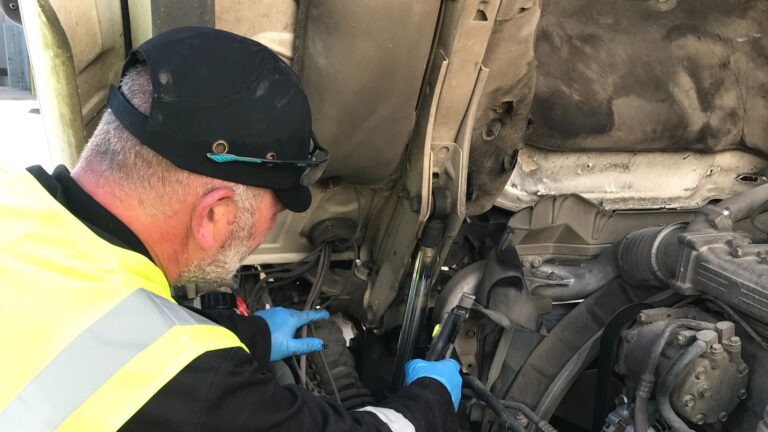
Preventative maintenance is not only considered a legal expectation by the DVSA but new research from business group Logistics UK’s Vehicle Inspection Service shows it can be a money saver as well – with the potential to save the UK’s Heavy Good Vehicle (HGV) operators an estimated £203m a year.
Through its Vehicle Inspection Service (VIS), Logistics UK conducts tens of thousands of inspections every year across HGVs, PSVs, LCVs and other specialist equipment making the organisation the largest national supplier of vehicle inspection services. Analysing over 40,000 vehicle inspections carried out between April 2024 and March 2025, experts from VIS calculated that each inspection where at least one defect is identified, regardless of the severity, saves the operator on average £545 per vehicle in unplanned repairs and downtime. The business group’s analysis also shows almost 60% of HGVs inspections identify at least one defect per vehicle, meaning the potential saving to UK HGV operators amounts to £203m a year.*
A sound business case
Chris Lipscomb, Director of Operations at Logistics UK explains the significance of the preventative maintenance: “Defects identified during an inspection can range from blown bulbs to more serious steering and braking defects, but they all have the potential to cause disruption if they need to be remedied when a vehicle should be operational. Operators are aware of their legal responsibilities regarding preventative maintenance, but the potential savings our research identifies, show there is a financial business case for operating safe and roadworthy vehicles, alongside the operator’s legal and moral duty.”
Data in Logistics UK’s latest “Compliance Report 2025” shows there has been consistent improvement in compliance and vehicle maintenance standards across the industry over the last 15 years: the initial failure rate for HGVs has decreased from 32.4% in 2008/09 to 10.3% in 2024/25, while the final failure rate (reflecting the proportion of vehicles that still fail after rectification) has dropped from 17.7% to 6.9% over the same period.
Mr Lipscomb continues: “These positive trends in vehicle compliance show how seriously operators take their responsibilities and reflect a combination of cultural change and operational improvements as well as changes to regulatory requirements.
“In addition, the increased expectations of the DVSA have encouraged operators to adopt more proactive maintenance regimes. This has always been best practice within the industry but not only is preventative maintenance now an expectation, our research shows that it has the potential to save operators thousands of pounds.”
*The UK HGV Fleet is 625,509 (SMMT) and Logistics UK’s operational experience shows 372,177 vehicles (59.5%) would be expected to have at least one defect identified during an inspection. Logistics UK calculates the potential cost saving for an operator to be £545 (gross) for each inspection that identifies at least one defect. Applying this saving to the UK HGV fleet shows the potential cost saving from unplanned repairs and downtime is £203m.
Image provided by Logistics UK
